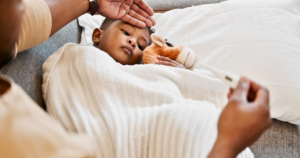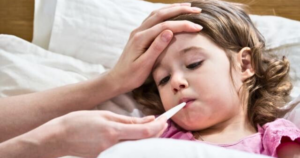Walking Pneumonia is Spiking, Especially in Kids: Here’s What to Know

In recent weeks, health professionals have seen a significant uptick in cases of walking pneumonia, particularly among children. As parents and caregivers face concerns about respiratory infections this season, understanding the nature, symptoms, and preventive measures of walking pneumonia is essential.
What is Walking Pneumonia?
Walking pneumonia, formally known as mycoplasma pneumonia, is a milder form of pneumonia caused by the bacterium Mycoplasma pneumoniae. Unlike typical pneumonia, which can cause high fevers and extreme fatigue, walking pneumonia often presents with subtler symptoms, making it easy for kids (and sometimes adults) to carry on with daily activities—hence the term “walking” pneumonia.
Why is it Spiking in Kids?
Experts are attributing the rise in cases to a combination of factors. With children returning to school and indoor activities increasing as temperatures drop, close contact with peers can contribute to the spread of bacteria. Children, especially those under 15, are more susceptible to mycoplasma pneumonia due to their developing immune systems, which often lack full immunity to certain respiratory infections.

Symptoms to Watch Out For
Walking pneumonia symptoms can vary but generally include:
- Persistent, dry cough
- Mild fever (although some cases may not present a fever)
- Sore throat
- Fatigue and mild weakness
- Headaches or chills
For parents, these symptoms may seem similar to a cold or other mild respiratory infection, but a cough that lingers for more than a week or worsens should prompt a visit to a healthcare provider.
How is it Diagnosed and Treated?
A healthcare provider can diagnose walking pneumonia through a physical exam and possibly a chest X-ray or lab test, especially if symptoms persist or worsen. Walking pneumonia is typically treated with antibiotics, as it is a bacterial infection. In most cases, kids can recover with rest, fluids, and time, but antibiotics can help shorten the duration and reduce the risk of spreading it to others.
Preventive Measures
Preventing walking pneumonia involves basic hygiene practices:
- Frequent Handwashing: Encourage children to wash their hands regularly, especially before eating.
- Avoiding Close Contact: If a child is sick, try to limit close contact with other kids.
- Disinfecting Surfaces: Frequently clean commonly touched surfaces, such as doorknobs, light switches, and school supplies.
- Healthy Lifestyle: Ensure kids are getting plenty of sleep, a balanced diet, and regular exercise, all of which boost immunity.
When to Seek Medical Help
While walking pneumonia is generally mild, parents should seek medical attention if their child experiences any of the following:
- Persistent or worsening cough lasting more than a week
- Difficulty breathing
- High fever (above 102°F) that doesn’t subside
- Chest pain
The Takeaway
While walking pneumonia might not always lead to severe illness, the recent spike in cases, particularly among children, is a reminder to stay vigilant. Knowing the symptoms and practicing preventive measures can help keep kids healthy and curb the spread of this and other respiratory infections as we move deeper into cold and flu season.
To address and reduce the risk of walking pneumonia, especially in children, you can take several proactive steps:
- Know the Symptoms: Familiarize yourself with signs like a persistent cough, mild fever, sore throat, and fatigue. Early detection can prevent it from worsening.
- Seek Medical Advice: If symptoms persist, consult a healthcare provider. Walking pneumonia is usually treatable with antibiotics, so early intervention can help recovery.
- Practice Good Hygiene: Encourage frequent handwashing and avoid sharing personal items to reduce the spread of bacteria. Regularly disinfect surfaces, especially in shared spaces.
- Boost Immunity: Ensure a healthy diet, adequate sleep, and regular physical activity to strengthen the immune system.
- Limit Exposure in Crowded Places: Children in schools or crowded areas are more at risk, so maintaining a bit of distance when possible can reduce transmission.
- Allow Time for Rest: If your child is diagnosed with walking pneumonia, ensure they get plenty of rest to recover fully and avoid spreading it to others.
Taking these precautions can help protect against walking pneumonia and improve overall respiratory health.












Comments 1